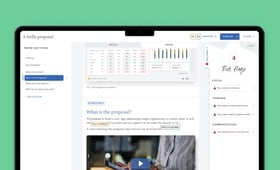Board reporting software
Understand board reporting software and its role in enhancing board effectiveness.
Board reporting software focuses on the creation and management of board reports, which make up a board pack. Rooted in the Japanese product design concept of poka-yoke (which translates as "mistake proofing"), our AI-powered board and management reporting platform, Lucia, acts as a critical friend and editor, nudging report writers to improve their writing and sharpen their insights as they go.
In this guide, we explore what board reporting software is, the impact that high-quality board information can have on board performance, and how to choose the right software for you.
What is board reporting software?
Board reporting software, like Lucia from Board Intelligence, helps to create insightful board papers that shape productive board conversations and inform robust, timely board decisions.
Lucia, which is powered by AI, has been designed specifically to enhance the quality and impact of the information presented to the board. Its tools and features support management to deliver insights that help the board exercise their steering and supervisory duties – and, in turn, improve board effectiveness.
How is board reporting software different from board management software?
Board reporting software and board management software solve different but complementary problems.
Reporting software focuses on creating clear, insightful, and well-structured content for boards and committees. It helps management teams present information in a way that drives better decisions.
Board management software, on the other hand, ensures those reports are distributed, accessed, and managed securely. It handles the governance side: agendas, board materials, annotations, voting, and compliance.
In short, reporting software improves the quality of board content, while management software ensures it reaches the right people, securely and efficiently.
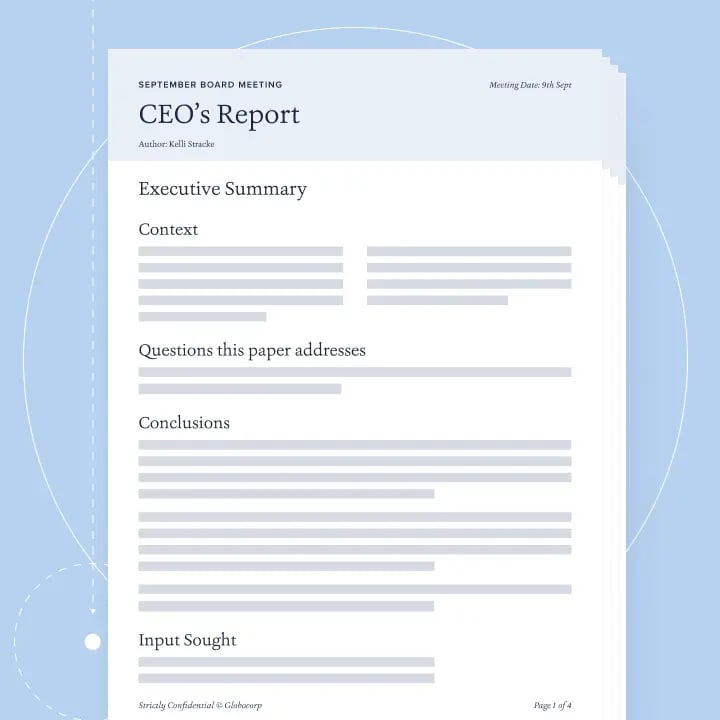
A thinking and writing platform that helps you to write brilliantly clever and beautiful reports that surface breakthrough insights and spur your business to action.
Find out moreWhat are the key requirements for an effective board report?
Effective board reports typically include the following:
- A clear statement of context, establishing why the report matters to the board and how it connects to the organisation's objectives, strategy, and priorities.
- A concise executive summary that highlights the key insights contained within the paper. This helps directors to identify where they need to focus and where they can add greatest value.
- Relevant metrics measuring performance against established targets and showing trends over time, to provide context. These metrics should be packaged in a KPI dashboard to provide a high-level overview of the organisation's performance and outlook.
- Balanced information that offers a candid assessment of challenges, successes, risks, and opportunities. Risk assessments should identify relevant potential concerns, along with mitigation strategies already in place or under consideration.
- Forward-looking implications and recommendations, outlining suggested next steps, decision points, and questions for the board to consider.
- Simple visual elements like graphs, charts, and diagrams to communicate complex information quickly and effectively.
- An appropriate level of detail so the report is comprehensive enough to inform but concise enough to be read and fully digested by directors in advance of the meeting.
What are the key reporting challenges in modern governance?
Our long-standing research initiative, conducted in partnership with the Chartered Governance Institute UK & Ireland (CGIUKI), has helped over 1,000 organisations assess the quality of their board packs since 2018. The findings reveal a concerning pattern: in 2025, 68% of participating organisations rated their board materials as either "weak" or "poor," while a mere 1% achieved an "excellent" rating.
The research identified three consistent failure points in board reports:
- Lack of focus: Reports are too long and cover too wide a range of topics. Materials often contain excessive detail on operational matters while missing critical strategic insights.
- Unstructured thinking: Analysis contains gaps or weak logic, and information is presented without clear conclusions, insights, or implications for decision-making.
- Poor communication: Dense text, confusing data, and inconsistent formatting leave board members searching for the key messages and unclear about what to do with the information.
Board Intelligence's methodology, the Question Driven Insight Principle, specifically addresses these three issues, offering a formula for report writing based on this extensive research into board reporting best practice. It improves:
- Critical thinking: providing frameworks to help report writers ask the right questions, so they can select the most relevant information, extract actionable insights from it, and develop robust plans and recommendations.
- Communication: offering simple communication strategies to help improve the quality of writing and data visualisation, and convey key messages in a clear, concise, and compelling manner.
- Focus: guiding management to align the information and their recommendations with the problems and opportunities that matter most to the organisation.
Pro tip: Read our guide to common board pack mistakes and how to fix them, which includes our top tips and a handy checklist to help you put them into action.
What are the key features of board reporting software?
Board Intelligence's board reporting solutions aren't just about presenting data — they're about enhancing data with structured question prompts and well-crafted narrative to surface and communicate valuable insights. These are the features that help report writers write concise, focused board reports:
- Brings laser focus, sharp thinking, and clear communication to board and management reporting, ensuring reports remain focused on what matters most;
- Prompts teams to connect their insights to the bigger picture and clarify the input they seek from the board;
- Gives writers feedback and advice on their reports, to help them refine their writing as they go;
- Uses proven frameworks that ensure reports cover directors' duties, eliminate gaps in logic, and build confidence in the author's analysis and conclusions.
Best practice reporting templates
Best practice reporting templates are about more than providing a few headings for a cover sheet and some guidelines to encourage consistent formatting. They're about stimulating critical and creative thinking, avoiding blind spots and bias, and building confidence in the information that's being presented. They're about surfacing robust conclusions and actionable recommendations that move the needle.
Guided by Lucia's smart templating system, your management team can focus their reports (and their thinking time) on questions that drive decision-ready insight and support directors to fulfil their duties. Templates and question frameworks are tailored to the topic, ensuring reports are aligned with what directors need to know – whether it's a strategy deep-dive, routine performance update, or an investment approval.
Pro tip: Find out how the QDI Principle can be used to create better board packs.
AI-powered analytics
Real-time analysis flags overly wordy, one-sided, or backwards-looking content, providing live AI feedback as you write. Real-time writing prompts challenge your team to think more deeply as they craft their reports, and AI-generated executive summaries place key messages right up front where they ought to be. Lucia's AI-powered nudges ensure they:
- Link to your organisation's big picture.
- Avoid blind spots in your analysis and plans.
- Deliver insight you can act on.
- Make your reports easy for directors to read and digest.
"Writing in Lucia has really helped me write meaningful and well-structured reports. It's easy to pick a structure and then the AI guides me to think about what I want to say and the key messages I need to get across."
- Catherine Schlieben, Group Head of Performance and Development, National Grid
Security and collaboration
Lucia is the only AI-powered reporting tool purpose-built for board and management reporting. It’s been developed with both accuracy and privacy in mind, to give you not just advanced analytics and rewriting features, but also peace of mind that your data is never shared and your team is using AI responsibly.
What are the benefits of advanced board reporting?
In an era of increasing complexity, scrutiny, and time pressure, boards need more than just information — they need clarity, insight, and focus.
Research from Board Intelligence and the CGIUKI shows that board packs are becoming longer, less effective, and more expensive to produce. There is a real need to create shorter, easier-to-read, and more impactful reports.
By improving the quality and structure of board and management papers, directors and executives will be empowered to make better decisions, operate more efficiently, and stay compliant in a fast-changing landscape. Below, we explore these key benefits in more detail.
Enhanced decision-making
Great board papers go beyond sharing information — they uncover meaningful insights and spark impactful ideas. This is achieved by asking the right questions: clear, sometimes challenging prompts that get straight to the heart of performance, strategy, implications, and next steps. Organising reports around these questions helps ensure logical, critical thinking, and decision-making and prevents key issues from being overlooked.
We helped TSB, a leading UK retail bank, enhance their decision-making with our advanced board reporting software and tools. Here's what they had to say:
"Thanks to your training and templates, we've cut down the length of the board packs and put the key messages and asks front and centre. This has enabled richer, yet focused debates and more informed decision-making."
- Keith Hawkins, Company Secretary, TSB
Improved governance transparency
Board Intelligence's advanced reporting software enhances governance and compliance transparency by ensuring reports are clear, consistent, and honest. Using QDI frameworks and real-time AI feedback helps authors surface key issues, avoid bias, and maintain high reporting standards. This leads to balanced communication, better decision-making, and a clear audit trail, strengthening oversight and accountability across the board.
Topic-specific frameworks can also help to comply with certain regulations and reporting requirements, such as the Consumer Duty, which was introduced in the UK financial services industry in 2023.
Time and resource efficiency
Advanced board reporting software boosts time and resource efficiency for various stakeholders and participants.
- For report writers: Faster, smarter writing
Live AI feedback, smart templates, and automated summaries help authors produce high-quality reports more quickly and with fewer revisions, freeing up more time for strategic work. - For report readers: Less to read, more to gain
Clearer, more focused reports highlight key insights up front and cut through the noise, reducing board meeting preparation time and helping directors grasp the essentials faster. - For board meetings: Greater focus, quicker decisions
Better reports lead to better-prepared attendees, sharper agendas, and more strategic discussions, resulting in shorter, more effective meetings and faster decisions.
Here are two examples of how our board report software saved clients time and money:
Take Reckitt, the FTSE 100 consumer goods company. Employees were spending up to 17 hours writing reports, often duplicating work and overloading papers with irrelevant information, leading to unfocused, time-consuming meetings.
By introducing smarter templates, clearer briefings, and training on high-impact reporting, Reckitt saw:
- 80% reduction in paper length.
- 300% improvement in paper quality.
- 10 minutes saved per agenda item.
The result? Leaner reports, shorter meetings, and better decisions.
Another great benefit of using an advanced board reporting tool is the cost savings it brings. Many organisations and leaders aren't aware of the true cost of creating board reports, and this is where our board reporting calculator comes in handy. Working with CGIUKI, we developed a peer-reviewed model structured around the key stages of the board reporting process:
Regulatory compliance support
Regulation and reporting requirements are an important aspect of modern governance. In some cases, they are blamed for board packs becoming increasingly bloated.
Here's how Board Intelligence's reporting software helps you cut through the noise:
- Supporting regulatory compliance by delivering structured, transparent, and well-documented reports that provide the clarity and traceability regulators expect.
- A robust audit trail enables organisations to maintain a clear, searchable record of what was reported, discussed, and decided. This helps boards demonstrate that due diligence was followed and directors discharged their duties responsibly.
- Lucia's AI-powered feedback flags issues such as missing insight, vague language, or biased reporting. This helps ensure that the information presented is accurate, complete, and fair, as required by regulatory bodies.
- Well-structured reports, aligned with compliance best practices, mean boards are better prepared for regulatory reviews, audits, and legal inquiries, with evidence that risks were considered and decisions were properly informed.
What are the different types of board reports?
Board reports come in various formats, each serving a specific purpose to support informed decision-making and effective governance. Here are the most common types that can be created using our board reporting software:
CEO’s report
The CEO's report summarises the organisation's overall performance, key developments, risks, and opportunities. Described by many board members as the most important paper in their board pack, it sets the tone for the rest of the board meeting.
KPI dashboard
A KPI dashboard provides a visual summary of an organisation's performance and outlook. It pulls together a range of carefully selected metrics to give directors an "at-a-glance" view of the organisation's health.
Financial performance report
The finance report provides detailed financial statements, analysis of performance against budget, cash flow status, forecasts, and key financial ratios. It is crucial for monitoring the organisation’s fiscal health and the financial outlook.
Strategic progress tracker
The strategy update focuses on long-term goals, strategic initiatives, market trends, and progress towards the organisation's mission. It encourages forward-thinking discussions and helps maintain focus.
Decision papers
While board reports are about "Here's what's happening", decision papers, or business case papers, are focused on "What should we do?" They are action-oriented documents that support the board in making a specific decision. They outline the issue, proposed options, recommendations, rationale, risks, and next steps. Their purpose is to facilitate informed, timely decision-making.
How does the reporting process work?
The process starts with planning the agenda for the board meeting. The agenda shapes the board's information needs and determines which papers are required — for example, setting the topics and whether or not information is required for note or for decisions.
Our guide to agenda planning explores how to align meetings with strategic priorities. It offers a methodology for ensuring the right topics come before the board at the right time. Meanwhile, our Agenda Planner tool helps governance professionals to manage the board's forward calendar and meeting agendas, streamlining the administrative process.
Board paper briefing
Briefing is an essential step in the process. A thorough brief ensures management deliver appropriate board-level information and offer focused insights relevant to the discussion topic.
Board Intelligence's board portal includes a Briefing Tool feature, which automates paper requests and helps governance professionals issue structured briefs, set deadlines, and manage report submissions. This streamlines the content collection process.
Writing board reports
This stage focuses on gathering the right data inputs and then structuring management's analysis to generate actionable insights and robust recommendations.
Lucia, Board Intelligence's best-in-class report writing software, supports the creation of insightful, beautifully written board and management reports designed to spur action.
Board Intelligence can also offer specialist report writing training to management teams, to upskill them to deliver this important part of the process to a consistently high standard.
Report collation
This stage focuses on assembling the board pack. Board Intelligence's board portal offers a Pack Manager tool, which allows users to compile board papers easily, number pages automatically, and set access permissions before publishing the pack.
Secure distribution
Board Intelligence distributes board packs through a secure, cloud-based platform. The board portal cuts down on the number of tools used to brief authors, collate reports, distribute packs, and approve board resolutions by replacing instant messaging apps, email, file-sharing or e-signature tools, and more – improving cybersecurity and usability for directors.
Tools and features:
- Board Portal app: Controls who can read, annotate, and ask questions with clear restrictions on access.
- e-Signatures: Simplifies the signing, tracking, and approval process for all board documents securely and electronically.
Client success stories
Since 2008, Board Intelligence has been empowering boards with the science of board effectiveness. Take a look at our client stories showcase to see how our tools and expertise have transformed board reporting and decision-making at some of the world's leading organisations.
Transformative reporting outcomes
Find out how Keller Group and Rolls-Royce used our board reporting software and services to improve their board reports.
1. Keller Group
Over a decade, Keller Group expanded to 19 business units across 40 countries, employing 10,000 people. This growth led to increasingly complex board packs, making it difficult for board and committee members to discern performance drivers and contribute effectively.
Kerry Porritt, Chief Sustainability Officer and Company Secretary, noted that their meeting papers weren't effectively articulating challenges and opportunities, nor adequately addressing directors' questions.
To address these issues, Keller adopted Board Intelligence's tools, including the AI-powered reporting platform, Lucia.
Transformative outcomes:
- Shorter and more impactful board papers.
- More focused and strategic conversations.
- Improved communication and decision-making throughout the group.
Kerry Porritt commented: "When we worked out how many hours we were spending writing and editing papers every year, it was shocking. It was then a no-brainer that we needed to do something radically different."
2. Rolls-Royce
As a leading FTSE 100 engineering company, Rolls-Royce's board materials had become overly technical, lengthy, and dense. This complexity made it challenging for board members to extract key insights and engage in high-level strategic debates.
We collaborated with Rolls-Royce's secretariat team by providing comprehensive training for report writers on structuring reports logically and crafting effective summaries.
Transformative outcomes:
- Enhanced board discussions.
- Improved report quality.
- Organisation-wide adoption.
Darren Kamen, Deputy Company Secretary at Rolls-Royce, remarked, "Board Intelligence understood the specifics of our situation and need, and very much co-designed the templates and guidance alongside us."
Get started with Board Intelligence
Ready to try out an AI-powered report writing tool that can supercharge your board report writing? Book a demo to see it, and our other tools, in action.
It's as simple as filling out a short form and letting us know what you'd like to learn about. Iyou're looking for a bespoke solution, such as training or board pack design, you can also speak to our team of board reporting experts to discuss your needs.
FAQs
-
Can multiple people work on board reports at the same time?
Yes, multiple people can work on Board Intelligence reports collaboratively, although the exact way this collaboration happens depends on the workflow and access permissions set within the platform.
-
Can board members access reports securely from mobile devices?
Yes. Board papers produced in Lucia can be published to a secure reading room, which is accessible via a web browser, or shared via a board portal, which board members can access on a desktop, tablet, or mobile device anytime, anywhere.
-
What types of report can you produce using Lucia?
Lucia offers a wide range of board report templates, from the CEO’s report to strategy updates and decision papers. These templates provide a clear structure for report, built around a best-practice question framework which addresses the critical questions that directors expect to see addressed in those papers and organises information in a logical and robust manner. Our team of board reporting experts can also work with you to customise these frameworks or build bespoke reports, if required.
What is board effectiveness?
Board effectiveness refers to how well a board of directors fulfils its responsibilities. These responsibilities are set out in company law and supplemented by corporate governance codes and guidelines, which vary by country and sector.
Beyond compliance with relevant laws and regulations, board effectiveness also relates to how well a board performs its supervisory and steering roles.
The board’s supervisory role is focused on monitoring the delivery of short-term performance. When performing this role, directors are seeking assurance and managing risk. They are concerned with the organisation’s near-term outlook and whether the business will deliver its operational and financial goals.
The board’s steering role is focused on enabling sustainable, long-term value creation. The board is in steering mode when considering strategy and making significant investment decisions. When fulfilling this role, directors must be strategic, forward-looking, and consider a wide range of external factors, so that they can shape management's thinking and make high-quality decisions in alignment with the organisation’s purpose and values.
The most effective boards excel in both roles to deliver short-term goals and long-term vision.
Why does board effectiveness matter?
Boards impact the key drivers of organisational performance, from CEO succession planning and financial strategy to sustainability and culture. By setting the organisation’s strategy and goals, they define the parameters within which decisions are made throughout the organisation. This shapes how resources are allocated and outcomes are achieved far beyond the boardroom. They also ensure the organisation maintains its license to operate by proactively monitoring and responding to risks and complying with relevant laws and regulations.
Many academic studies have explored the link between effective boards and successful organisations. The most powerful reminder of the importance of board effectiveness, however, comes from a different source: the government-led inquiries and lawsuits that follow in the wake of corporate scandals. Their conclusions, and the evidence that emerges through them, highlight the importance of an engaged and effective board in preventing corporate failure, with boards having been implicated in high-profile collapses from Enron and Blockbuster in the US to Carillion and BHS in the UK.
As the Institute of Directors found in their analysis of the UK Post Office scandal, “the root causes were failures in human decision-making, organisational culture and business ethics. Post Office governance – and specifically the board of directors – proved unequal to the task of addressing these issues.”
What are the three pillars of board effectiveness?
Effective boards are built on three pillars: individuals, infrastructure, and information. These pillars form the backbone of how a board functions and delivers impact.
Individuals
Having the right people around the table, and ensuring those people behave in the right way — as individuals and as a group — is essential. Boards with diverse skills, relevant experience, and a culture of collaboration are more likely to be able to navigate complexity, think creatively, and make high-quality decisions.
Infrastructure
Having appropriate policies, tools, and processes in place creates a strong framework for ethical and compliant decision-making. It also ensures board operations are efficient, so that the board delivers satisfactory value-add in return for the resources required to support it.
Information
Accurate, timely, and well-presented information ensures directors understand the drivers of performance while enabling them to think creatively and make high-quality decisions. They need information that covers the relevant topics in appropriate detail to enhance their knowledge and stimulate productive discussions.
What do top-quartile boards do differently?
The three pillars of board effectiveness are key to building a well-rounded board that fulfils its various responsibilities. The most successful boards, however, demonstrate two additional characteristics that enable them to deliver even greater value: they are impact-focused and have an “innovation mindset”.
Impact-focused
Highly effective boards actively contribute to organisational strategy, testing the viability of current business models and building alignment at all levels. When boards are focused on impact, they inject momentum and agility into the organisation’s decision-making, enabling it to go further, faster.
Innovation mindset
High-performing boards are future-focused, lean into emerging trends, and invite external perspectives to ensure the organisation stays ahead of the innovation curve. They value disruptive thinking and encourage a culture of rapid experimentation.
What are the key factors affecting board effectiveness?
A wide range of factors can impact board effectiveness. That is, in part, because boards are not homogeneous; the average public company board has between 9 and 11 directors, all of whom bring a different set of skills, experiences, and personality traits into the group.
Some of the key board effectiveness factors to consider include:
- Composition: The board’s performance will be heavily influenced by its size and shape — for example, the number of members, balance of executive and non-executive members, and the knowledge, expertise, and backgrounds of individuals. A more diverse group will analyse situations from a wider range of angles and bring more ideas to the table, and this ultimately drives better outcomes. A 2023 McKinsey study, for example, found that companies in the top quartile for board-gender diversity were 27% more likely to outperform financially than those in the bottom quartile.
- Culture: A collaborative, open-minded culture that encourages challenge, debate, and the expression of ideas will enable the organisation to tap into the knowledge and expertise of board members. It will also support the board in understanding performance and shaping robust decisions. Research shows that simply giving people “permission to debate” drives better outcomes.
- Mandate: It’s important that the board is clear on its roles and responsibilities, and that the wider organisation understands its role too. This focus and alignment ensures directors can engage with the right issues in the right way, at the right time, and that its performance can be more easily assessed.
- Strategy: The organisation’s strategy shapes what is required from the board. If the business is pursuing an M&A strategy, its board will need a different set of skills and experiences to shape and execute this strategy compared with a turnaround or restructuring situation, for example.
What are the common challenges affecting board effectiveness?
Only 30% of executives rate their boards as “good” or “excellent”. Meanwhile, 62% of CEOs want to replace one or more of their directors. This research by PwC suggests there is significant room for improvement in how boards operate and that some of the factors listed above can be difficult to influence without appropriate tools and resources.
Common challenges include a lack of diversity, inadequate training, crowded meeting agendas, and limited access to timely information. These issues can hinder the board’s ability to address complex issues and make timely and informed decisions.
For example, research by Board Intelligence shows that fewer than half (48%) of directors and governance professions get value from their board papers and the average agenda item gets only 21 minutes of discussion time.
By offering targeted education and professional development opportunities, taking a strategic approach to agenda planning, and providing best practice report-writing guidance to management, boards can overcome these obstacles and improve their performance.
How do you measure board effectiveness?
Measuring board effectiveness generates valuable insights that can help to improve the board’s performance and enhance its contribution to organisational success.
Through regular board evaluations, whether self-assessments or facilitated external board performance reviews, boards can identify their strengths and weaknesses and benchmark their performance against best practice and regulatory standards. This allows the chair and company secretary to identify gaps and take proactive steps to improve the board’s effectiveness. Technology tools can also gather and analyse data on board processes, activity, and impact, to help the board develop a continuous improvement mindset.
According to research conducted by Board Intelligence in December 2024, only 17% of executives believe their boards are set up to harness the opportunity around AI. To navigate new challenges and risks and exploit emerging opportunities, boards need to regularly reflect on their performance. By identifying gaps, boards can take proactive steps to stay ahead of industry demands and deliver forward-looking guidance that helps their organisations to thrive in the long term.
How can you improve board effectiveness?
Improving board effectiveness is crucial for achieving long-term business success. The most effective boards have optimised their processes and practices in the following ways:
- Board composition and culture: A diverse board with directors who have a wide range of relevant skills, expertise, and experiences can significantly impact board effectiveness. You can strengthen your board by conducting regular skills audits, recruiting for diversity, and offering continuous learning.
- Board collaboration and communication: Effective communication and collaboration are essential for a high-performing board. Planning effective meeting agendas, providing directors with high-quality board reports which include insightful KPI dashboards, and distributing materials early, for example, will ensure that board members are well-informed. This drives more productive discussions and more impactful decisions.
- Board focus and priorities: Having a clear sense of priorities, role, and responsibilities helps boards to invest their time and effort where it’s likely to have greatest impact. You can make it easier for the board to focus on what matters by clarifying the board’s mandate, mapping out individual directors’ roles and responsibilities, and engaging in an annual prioritisation and planning process.
- Meeting management: Effective meetings are the hallmark of effective boards. To improve the productivity of meetings, you should clarify meeting objectives, review materials and ask clarification questions in advance, and use technology tools such as a board portal or agenda planning software to streamline processes.
How do you manage a board effectively?
Managing a board isn’t easy; that’s why the most effective boards are led by highly effective chairs and supported by skilled governance professionals.
Effective board management requires a careful balance of soft and hard skills – from a thorough understanding of the applicable laws and regulations to active listening and delicate diplomacy. It also requires:
- Rules of engagement: The chair and company secretary should set clear expectations for both management and board members — for example, around preparation requirements and meeting behaviour.
- Priorities: Boards have a vast remit and limited time. Understanding what matters, and building agendas and meeting materials around these priorities, is crucial for using board meeting time effectively.
- Accountability: A sense of accountability can be achieved by setting and monitoring appropriate key performance indicators (KPIs) for the board that align with its role and responsibilities and the organisation’s overall objectives.
- High-impact reporting: A thorough briefing process for management, a structured approach, high-quality writing and effective data visualisation will ensure board papers are easy to engage with, insightful, and actionable.
- Open communication: Information should be shared with the board on a regular basis. The chair should also encourage an open exchange of information and views by building an inquiring culture and recruiting directors with strong critical thinking
- Continuous improvement: A continuous improvement approach is commonplace in high-performing teams and should also be applied to boards. It’s made easier if the board has a clear mandate, relevant KPIs, and the tools with which to monitor its performance on an ongoing basis.
Delivering these requirements and building a diverse board with relevant skills and experience will enable the board to deliver value consistently and confidently.
Trusted by 70,000+ directors and executives across the Fortune 500, FTSE 100, and OMX 30.
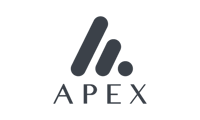


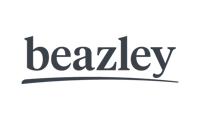





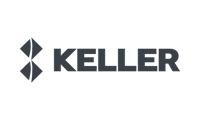

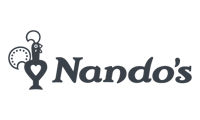

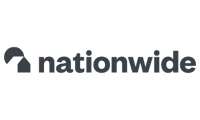
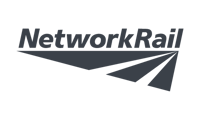
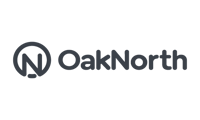




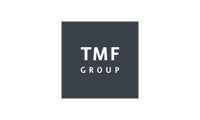
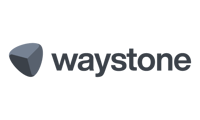

Board evaluations rooted in science, not convention
Board effectiveness reviews that go beyond governance requirements and focus on the value and impact of your board.
- Board performance framework shaped by 20 years’ experience across thousands of boards.
- Analytics, data-driven insights and actionable recommendations.
- Custom reviews for different committees and subsidiaries across all governance structures, from mutuals to listed companies.

Team diagnostics that drive deeper insight
Don’t wait for a formal board or executive team evaluation; get real-time feedback for continuous improvement.
- Digital tools, analytics, and deep-dive assesssments led by our team of experts.
- Evaluate board and executive team performance drivers not typically covered by board evaluations — from agenda analytics and meeting materials to decision-making agility and innovation quotient.

See how your board pack stacks up
Find out if your board information is setting your board up to succeed — or getting in its way.
- Benchmark board and committee materials against best practice and your peers, with a framework shaped by our work on thousands of board packs.
- Identify strengths and opportunities for improvement with expert, data-driven analysis.
- Enhance board pack quality and impact with a bespoke transformation plan.

Put analytics at the heart of board agenda planning & reporting
Expert analysis and benchmarking of board and committee agendas to support effectiveness reviews and stakeholder (and UK s172) reporting.
- Analyse where and how effectively your board spends its time.
- Identify actions you can take to deliver more focused, forward-looking, and strategic board meetings.


